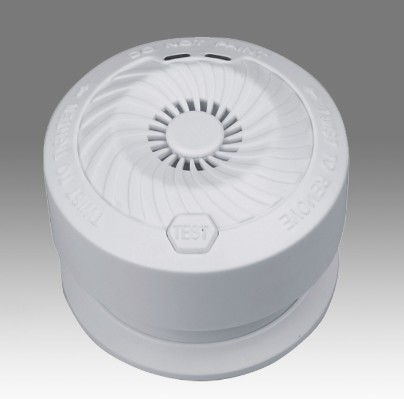A 10-year smoke alarm that stands out in fire prevention typically incorporates several key features and technologies to enhance its effectiveness. Here are some factors that make a 10-year smoke alarm notable:
-
Long Battery Life: The primary feature of a 10-year smoke alarm is its extended battery life. Traditional smoke alarms often require battery replacements every six months to a year, but a 10-year alarm is designed to last for a decade without needing a battery change. This ensures continuous protection and reduces the chances of the alarm being non-functional due to a dead battery.
-
Sealed Lithium Battery: Many 10-year smoke alarms are equipped with a sealed lithium battery. This type of battery is tamper-resistant and designed to provide a long, reliable life. Since it's sealed, users cannot easily remove the battery, preventing the risk of the alarm being disabled.
-
Advanced Sensor Technology: High-quality smoke alarms use advanced sensor technology to detect both smoldering and fast-flaming fires. Photoelectric and ionization sensors are common types used in smoke alarms, and some alarms may even combine both technologies for increased accuracy and responsiveness.
-
Interconnected Alarms: Interconnected smoke alarms communicate with each other, so when one alarm detects smoke or fire, all interconnected alarms in the home sound simultaneously. This feature ensures that occupants are alerted no matter where they are in the house, providing early warning and potentially saving lives.
-
Smart Features: Some 10-year smoke alarms come with smart features such as smartphone connectivity, allowing users to receive alerts and monitor the alarm remotely. Smart smoke alarms may also integrate with home automation systems, providing additional layers of safety and convenience.
-
Hush or Silence Button: A hush or silence button allows users to temporarily silence the alarm in case of a false alarm or when performing tasks that may generate smoke (such as cooking). This feature helps prevent the annoyance of constant alarms without compromising safety.
-
Easy Installation and Maintenance: User-friendly design, easy installation, and low maintenance requirements make the smoke alarm more likely to be properly installed and functional. Clear instructions and tools for installation, along with regular self-checks, contribute to the reliability of the alarm.
-
Compliance with Standards: A reliable smoke alarm should comply with safety standards established by organizations like the National Fire Protection Association (NFPA) and Underwriters Laboratories (UL). Compliance ensures that the device meets recognized safety requirements.
Remember to regularly test your smoke alarms, regardless of their lifespan, to ensure they are functioning correctly. Regular maintenance, adherence to safety guidelines, and staying informed about the latest technologies contribute to effective fire prevention in residential and commercial settings.